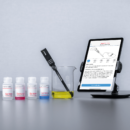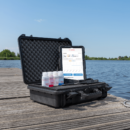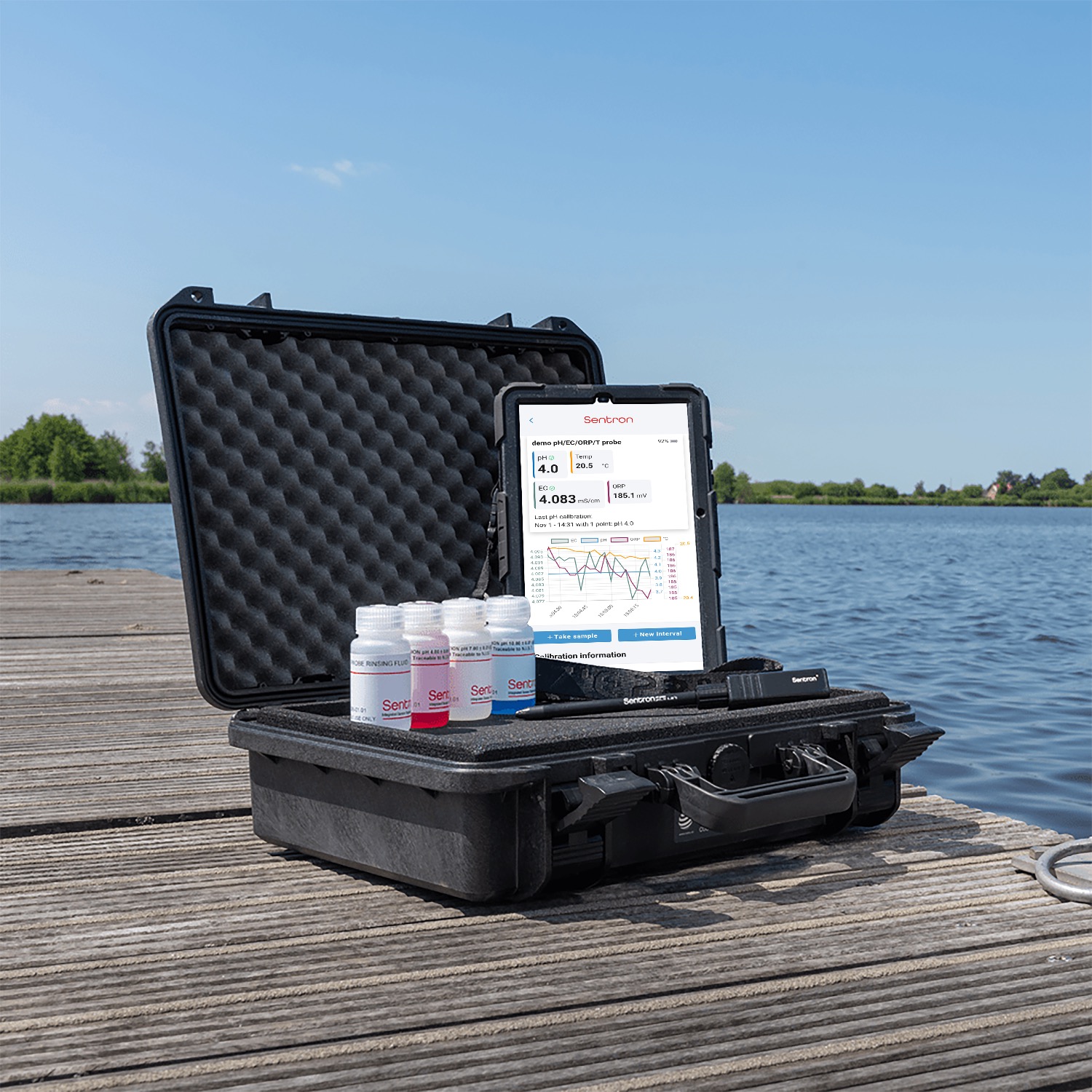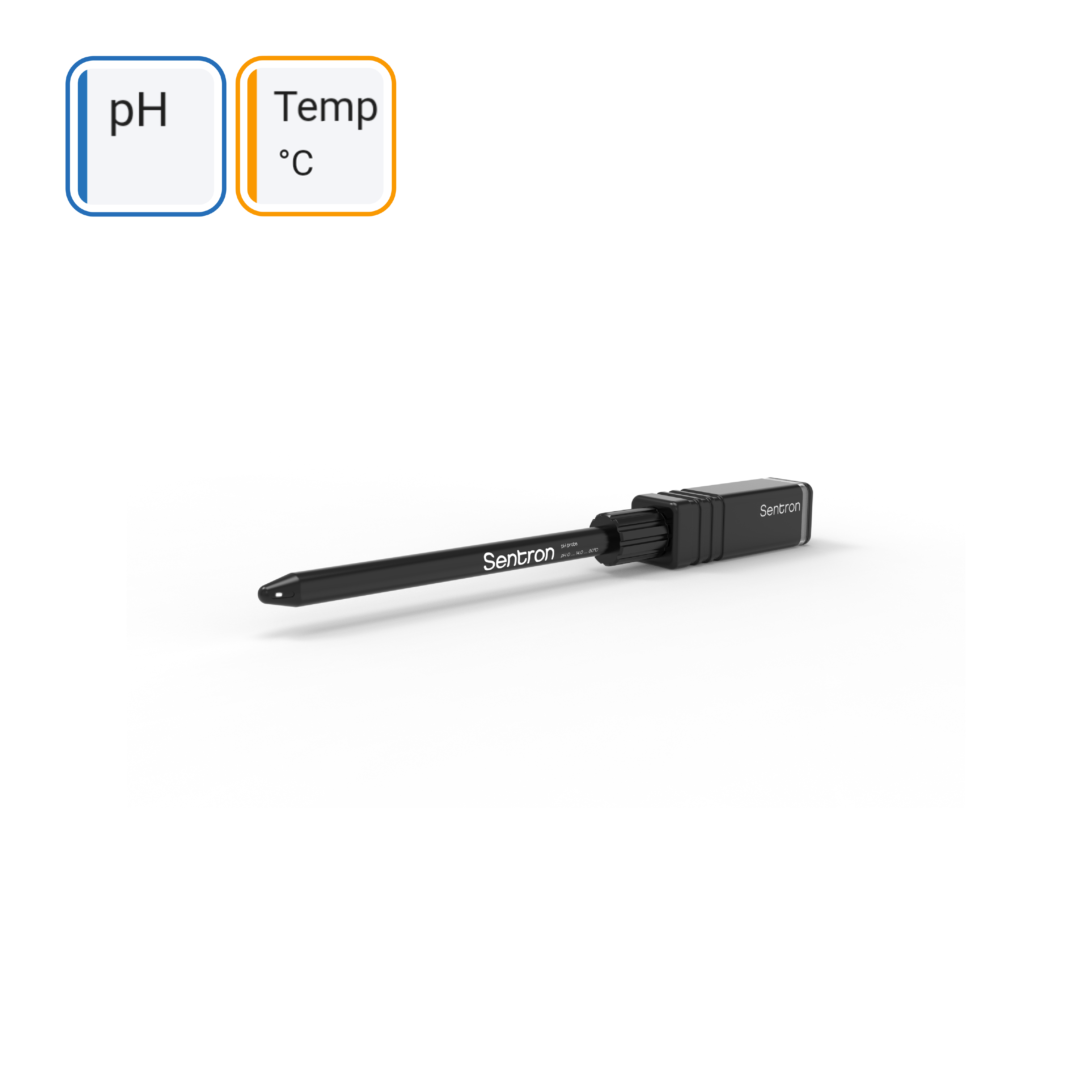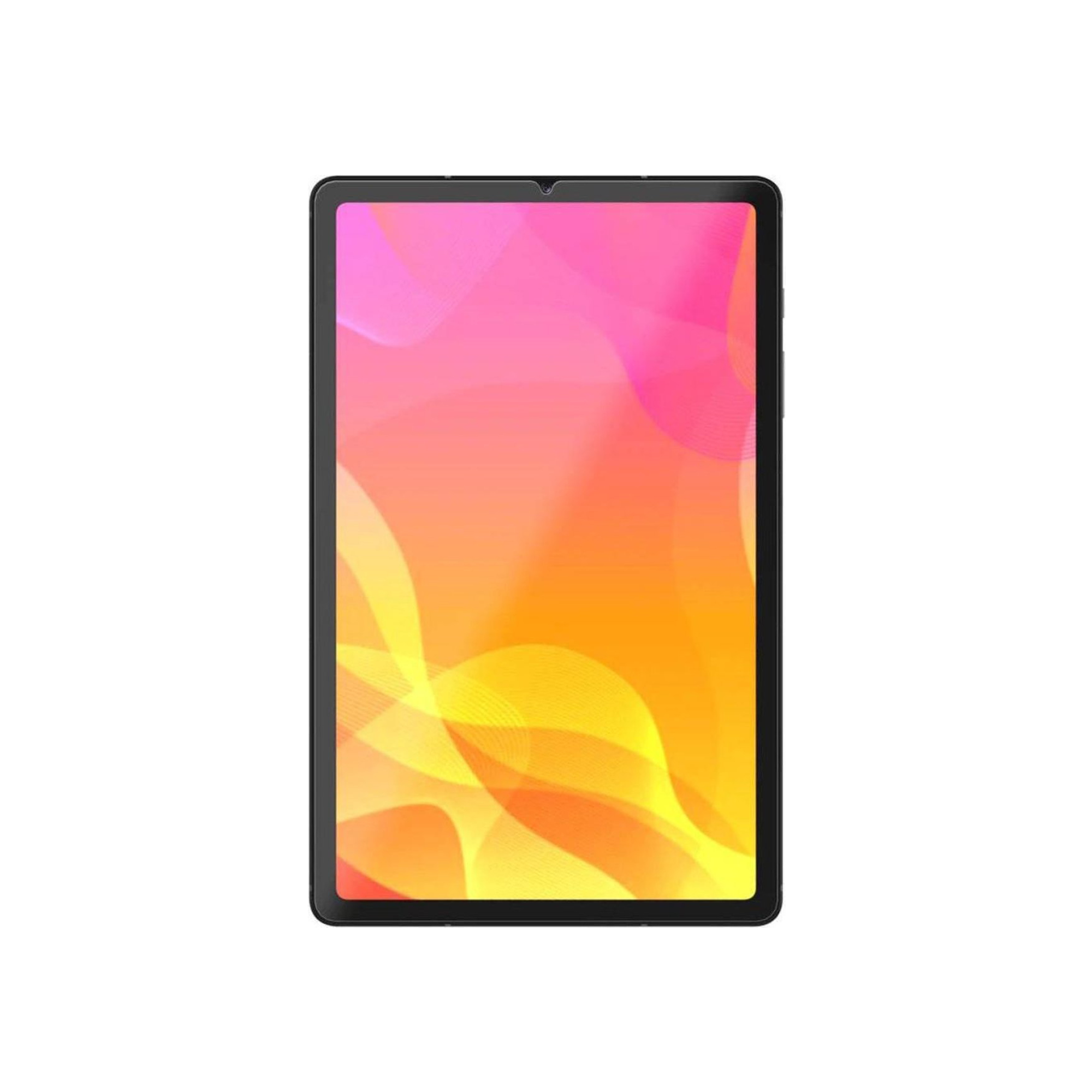ISFET pH meter for environment use
Take the lab with you. Our wireless handheld pH probe with glass-free ISFET pH technology makes it ideal for measuring the pH of water in tougher settings. Take direct pH, conductivity, ORP and temperature measurements for water quality monitoring using your smartphone or tablet.
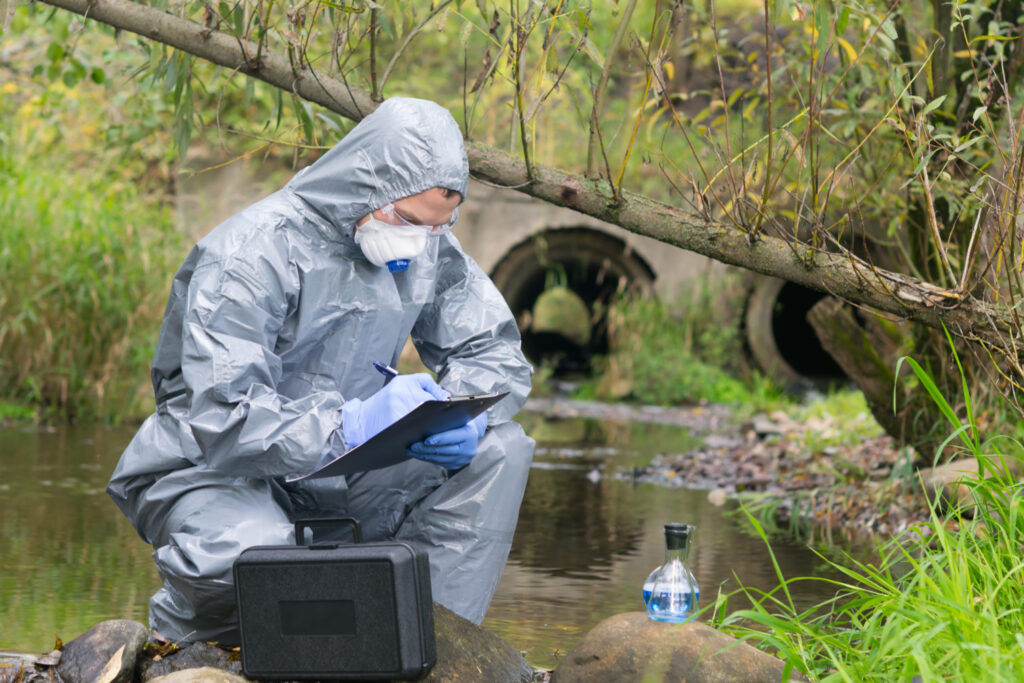
Environment
Take the lab with you. Our wireless outdoor pH meter with glass-free ISFET pH technology makes it ideal for measuring the pH of water in tougher settings. Take direct pH and temperature measurements for water quality monitoring using your smartphone or tablet.
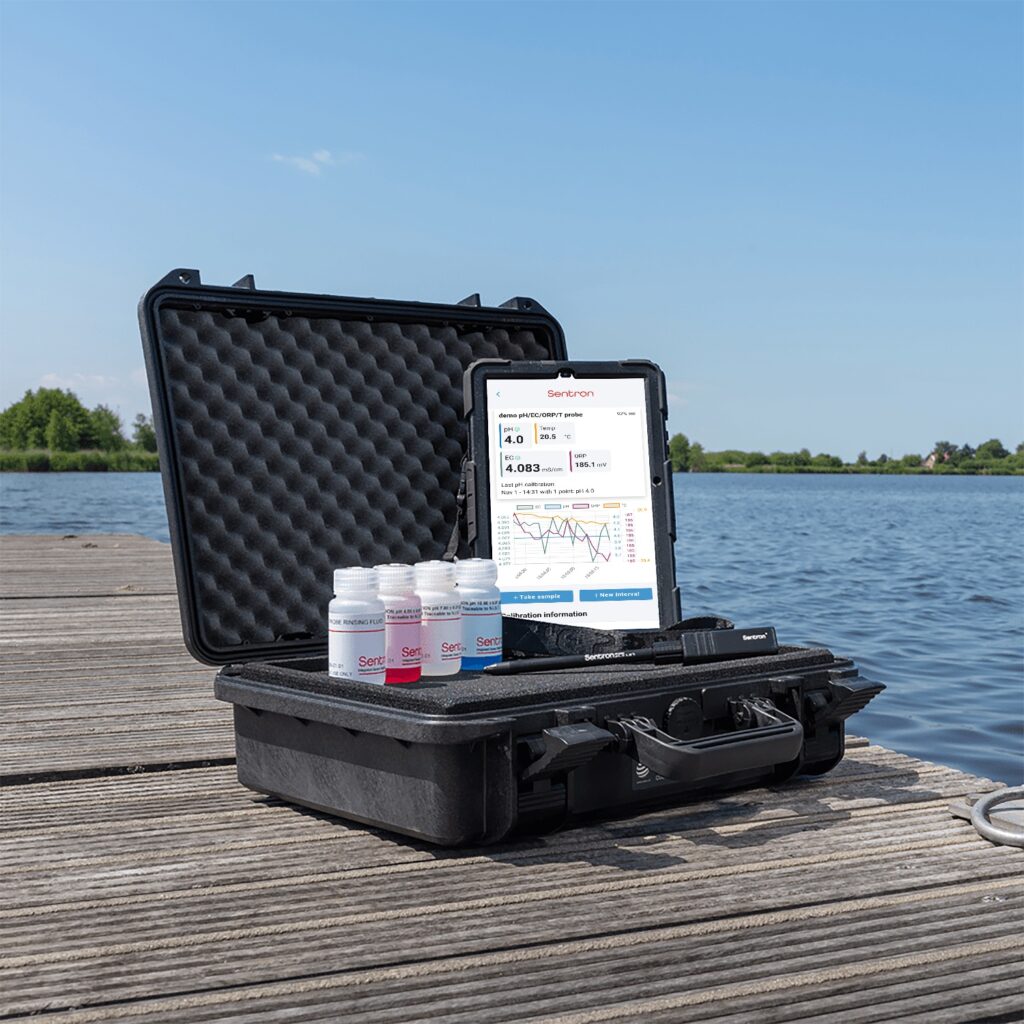
Industrial pH package
For ease of use, we have developed an industry measurement package for pH measurements in your facility or other environments. The large screen of the tablet provides easy visualization of the app and the tablet case protects it against damages. The carry case is large enough to take all the required buffer solutions and pH probes with you. It provides easy carriage and storage and protects the equipment.
Laboratory pH package
Look no further: we have the laboratory package. This complete benchtop package includes everything you need for wireless, durable pH monitoring in the laboratory. The tablet, held by a universal holder, provides easy use and visualization of the app at your lab table. The package contains a buffer solution set so you can start immediately with your pH measurements.
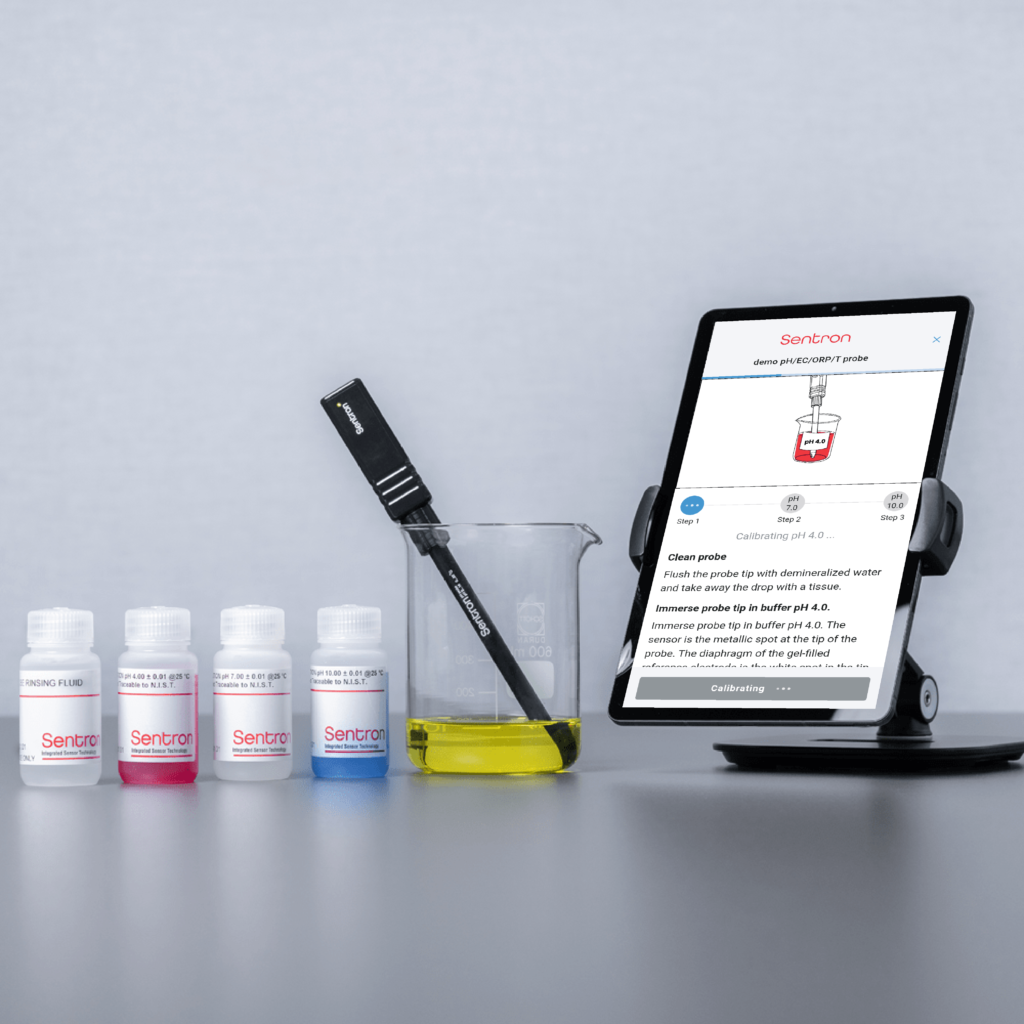
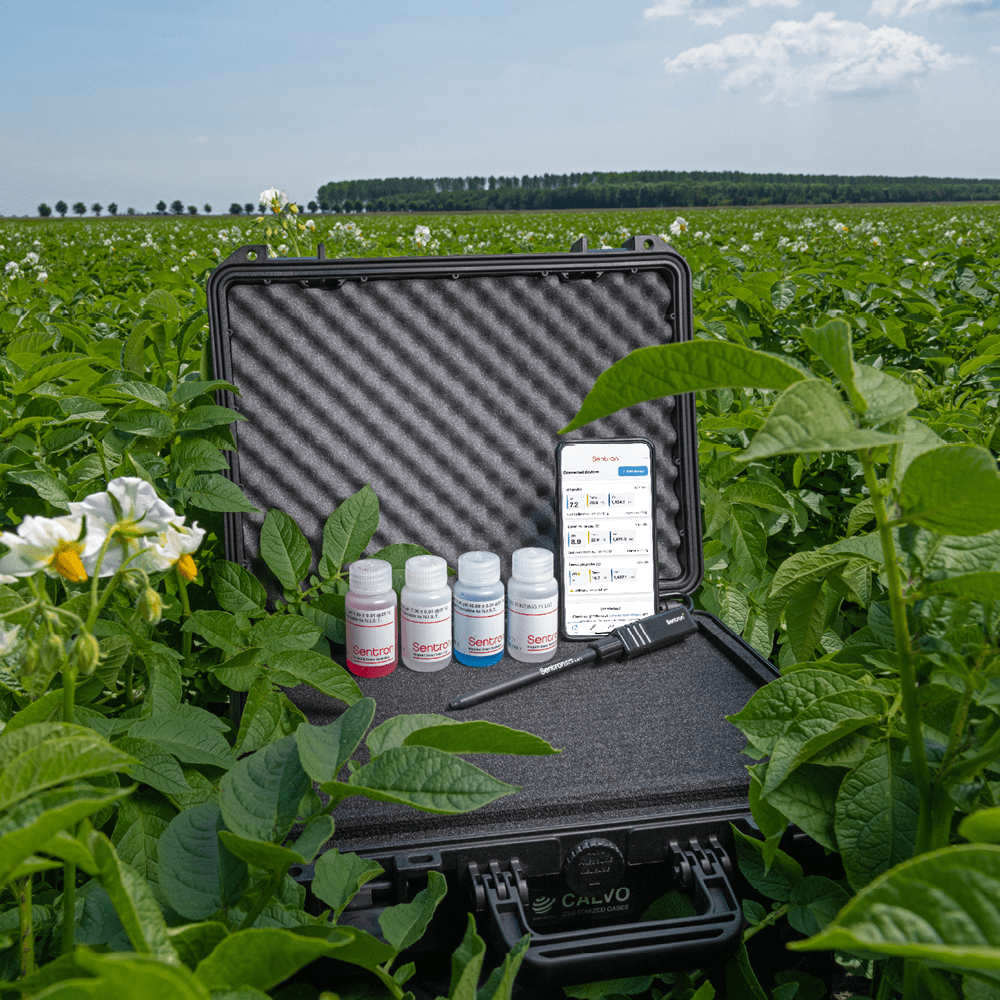
Agriculture pH package
For easy use, we have assembled a complete agriculture package. This package is all you need for wireless, durable pH monitoring in the field. The use of a smartphone provides easy use of the app. Multiple probes can be connected to the app for simultaneous readings. The required buffer solutions and pre-drill stick complete the package. The carry case protects the equipment and provides easy carriage and storage.
What’s next?
By taking a serious look at all applications, we keep entering into new innovations in our semiconductor production facility. Recently we launched the sensors for EC and ORP, with which great multisensor solutions for e.g. water monitoring can be provided.
Ion-Selective Sensors
We started innovative developments on ion-selective sensors that have a membrane mixture suitable for detection of different ions based on the ISFET technology. Selectivity is based on proprietary modifications with several polymer matrix configurations. Nitrate (NO3–), Ammonium (NH4+) and Potassium (K+) are currently in development.
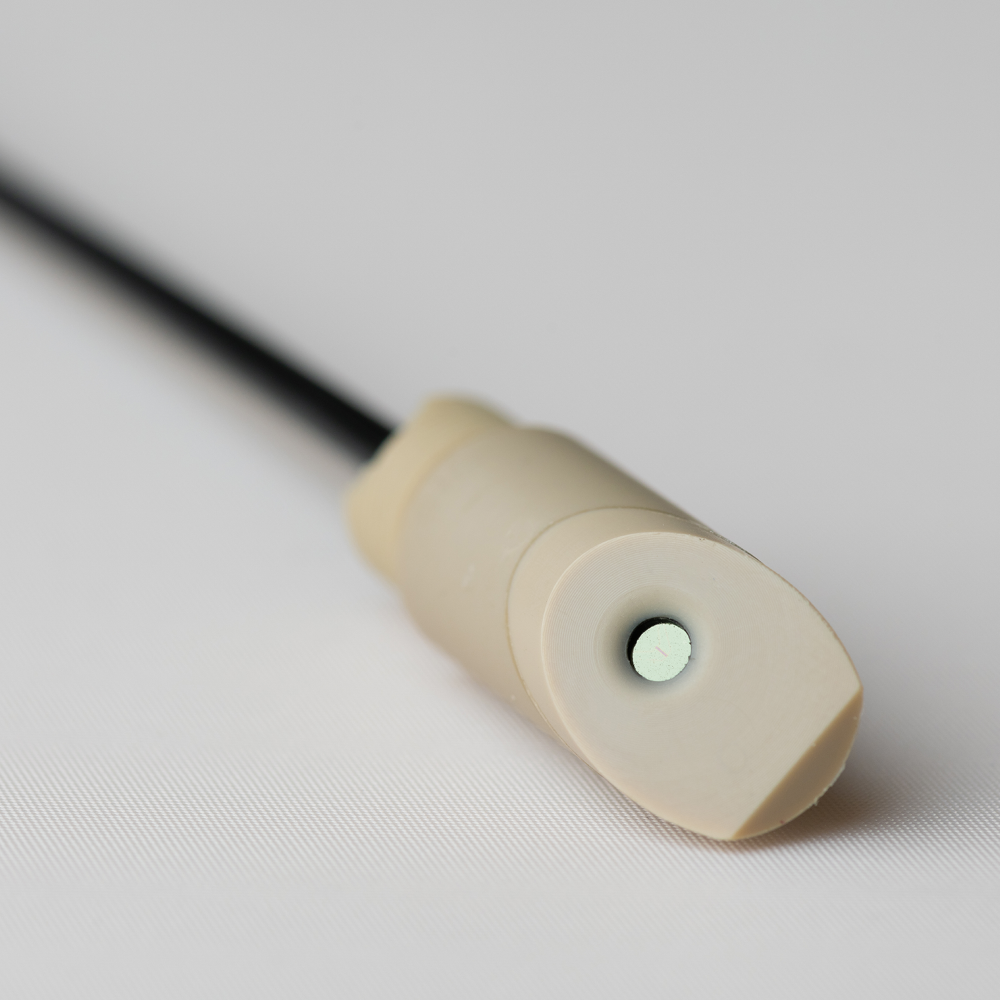
pH meter
Protecting the Environment with ISFET pH Probes
pH measurement is critical in environmental monitoring to determine the acidity or alkalinity of water, soil, and air. Accurate pH measurement is essential for ensuring the safety of the environment and preventing pollution. The ISFET pH meter for environment is a reliable and efficient tool for pH measurement in environmental applications.
What is an ISFET pH probe for environment?
An ISFET pH meter for environment is a pH measurement tool designed for use in environmental applications. It uses an ISFET sensor to measure the pH level of liquids, including water, soil, and air. The ISFET sensor offers several advantages over traditional glass electrode sensors, including faster response time, higher accuracy, and stability in harsh environmental conditions.
Advantages of ISFET pH meter for environment:
Fast and Accurate Measurements: ISFET pH meters provide fast and accurate pH readings, allowing environmental scientists to make timely decisions about pollution prevention and environmental safety.
Stability in Harsh Environments: The ISFET sensor is more stable in harsh environmental conditions, such as extreme temperatures, high salinity, and presence of chemicals.
Higher Accuracy: The ISFET sensor is less prone to contamination, leading to higher accuracy and reliability in pH measurements.
Portability: Some ISFET pH meters for environment are portable, making them ideal for on-site measurements in remote areas.
Versatility: ISFET pH meters can be used for pH measurement in water, soil, and air, making them a versatile tool for environmental monitoring.
The ISFET pH meter for environment is a reliable and efficient tool for pH measurement in environmental applications. With its stability in harsh environmental conditions, higher accuracy, and versatility, it’s becoming the preferred tool for environmental monitoring. ISFET pH meters are helping protect the environment by providing fast, accurate, and stable pH measurements in water, soil, and air, ensuring the safety of the environment and preventing pollution.

